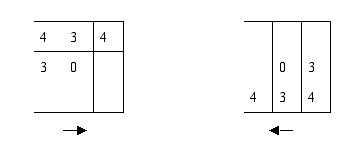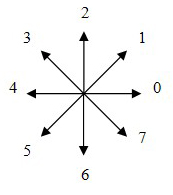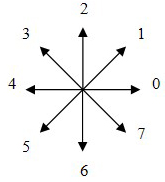Method for segmenting adhesion cells in image
A technology of images and cells, applied in image analysis, image data processing, instruments, etc., can solve problems such as segmentation deviation and complex cutting condition judgment, and achieve the effect of avoiding over-segmentation
- Summary
- Abstract
- Description
- Claims
- Application Information
AI Technical Summary
Problems solved by technology
Method used
Image
Examples
Embodiment Construction
[0024] The present invention will be further described below in conjunction with the accompanying drawings and specific embodiments.
[0025] Step 1: Carry out threshold segmentation on the image containing adhesion cells, mark the adhesion cells in the image as the foreground color, and the rest as the background color to obtain the binary image f(x, y), and the binary image f(x , y) do chamfering distance transformation to get the distance value of each point in the graph, and save it as a distance map d(x, y).
[0026] The binary image data is a 0-1 matrix with width w and height h, where 0 represents the background point and 1 represents the foreground point.
[0027] Step 2, determine the center point of the real cell
[0028] (1) Search for a local maximum point in the distance map d(x, y) (a local maximum point means that the distance value of the point is greater than the distance value of each point in its eight neighbors), and save its coordinate value in an array ...
PUM
 Login to View More
Login to View More Abstract
Description
Claims
Application Information
 Login to View More
Login to View More - R&D
- Intellectual Property
- Life Sciences
- Materials
- Tech Scout
- Unparalleled Data Quality
- Higher Quality Content
- 60% Fewer Hallucinations
Browse by: Latest US Patents, China's latest patents, Technical Efficacy Thesaurus, Application Domain, Technology Topic, Popular Technical Reports.
© 2025 PatSnap. All rights reserved.Legal|Privacy policy|Modern Slavery Act Transparency Statement|Sitemap|About US| Contact US: help@patsnap.com



